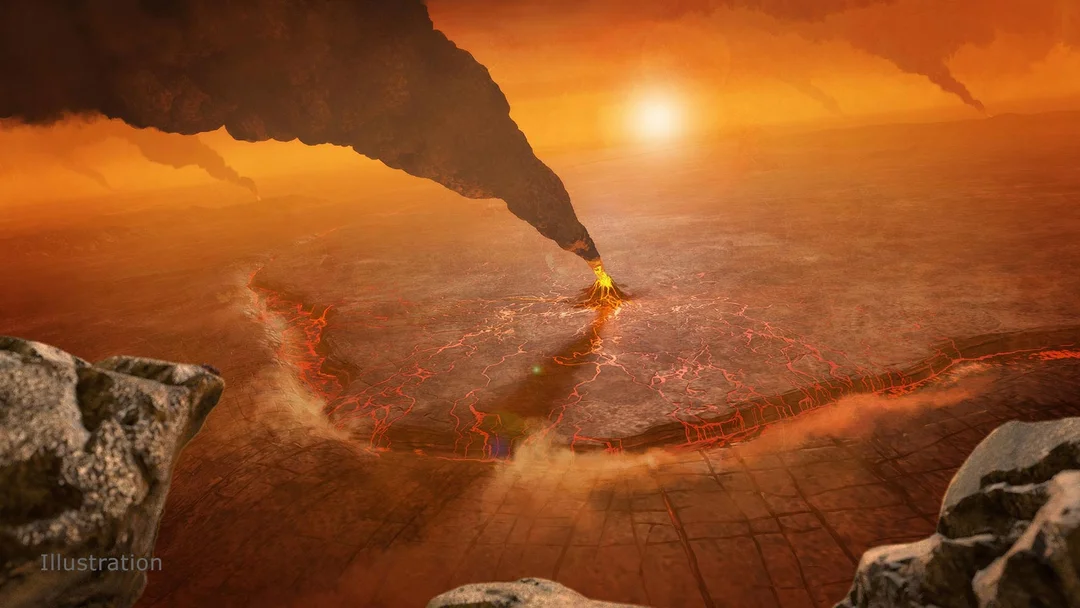
Venus’s Secrets Unveiled: Is Our ‘Twin’ Planet Still Geologically Active?
For decades, Venus has been considered a geologically dead planet compared to its active twin, Earth. However, a shocking reanalysis of data from NASA's Magellan mission, combined with new studies, suggests that Venus may be far more dynamic than previously thought. This revelation could revolutionize our understanding of planetary evolution and even provide insights into Earth's early history.
Magellan's Legacy: A Second Look
NASA's Magellan spacecraft, which orbited Venus in the early 1990s, gathered a wealth of data about the planet's surface. Now, over 30 years later, scientists are revisiting this data with fresh eyes and advanced analytical techniques. The results, published in Science Advances, point to ongoing tectonic activity beneath the Venusian surface.

Coronae: Bubbling Clues to Venus's Interior
The key to this discovery lies in the study of coronae, large, circular features on Venus's surface. These structures are believed to be formed by plumes of hot material rising from the planet's mantle, pushing up the crust. By combining Magellan's gravity and topography data, researchers were able to model the interactions between these plumes and the lithosphere.
"Coronae are abundant on Venus. They are very large features, and people have proposed different theories over the years as to how they formed," said coauthor Anna Gülcher of the University of Bern in Switzerland. "The most exciting thing for our study is that we can now say there are most likely various and ongoing active processes driving their formation. We believe these same processes may have occurred early in Earth's history."
The team found that plume-lithosphere interactions are active at 52 out of the 75 coronae they studied, indicating that Venus's interior is still very much alive.
A Surprisingly Thin Crust?
Another recent study published in Nature Communications suggests that Venus has a surprisingly thin solid crust – only 25 to 40 miles (40 to 65 kilometers) thick. This is comparable to Earth's crust, and it implies that geologic activity may be lurking just below the surface.
"This is surprisingly thin, given the conditions of the planet," says Justin Filiberto (NASA-JSC Astromaterials Research and Exploration Science Division). According to models, as the crust grows thicker, the bottom of it becomes so dense that it either breaks off and becomes part of the mantle or gets hot enough to melt. This could drive a recycling of material in the interior and fuel volcanic activity.
Future Missions: Unlocking More Secrets
These exciting findings come just as new missions to Venus are on the horizon. NASA's VERITAS (Venus Emissivity, Radio Science, InSAR, Topography, and Spectroscopy) mission and DAVINCI (Deep Atmosphere Venus Investigation of Noble gases, Chemistry and Imaging) missions, as well as the European Space Agency’s EnVision mission, are set to provide even higher-resolution data about Venus's surface, atmosphere, and interior.

"The VERITAS gravity maps of Venus will boost the resolution by at least a factor of two to four... a level of detail that could revolutionize our understanding of Venus' geology and implications for early Earth," said study coauthor Suzanne Smrekar.
What Does This Mean?
The emerging picture of Venus is one of a planet that is not quite as dead as we thought. The discovery of active coronae, a thin crust, and potential for ongoing volcanic activity suggests that Venus may share more internal dynamics with Earth than previously believed. This has significant implications for understanding how planets evolve and why Venus and Earth took such different paths.
Is Venus truly "alive"? Future missions to Venus will provide the data needed to answer this question definitively. What do you think? Leave your comments below!